What to do if your nail is broken?

Of course, a broken nail is not a tragedy, but every woman knows what a terrible feeling of discomfort this problem can cause. It becomes inconvenient to use the keyboard, the broken corner constantly touches household items, hair gets into the cracks when washing the head, the wool from the gloves gets stuck - this is only a small part of all possible consequences. What can we say that this is a serious aesthetic flaw, because a real lady should be perfect to the tips of her nails.
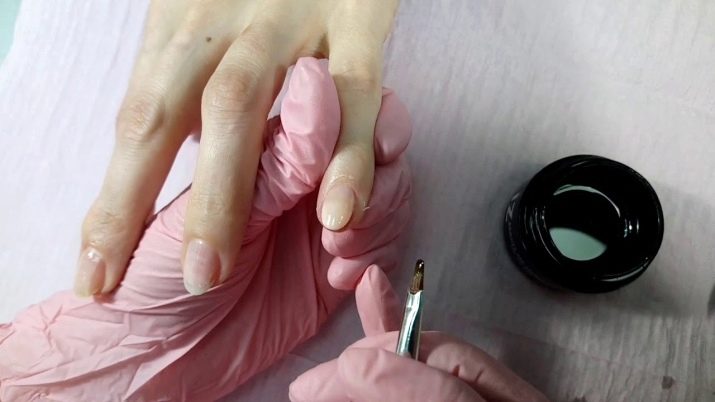
Why do nails break?
The main reason for brittle nails is a lack of vitamins and other useful elements. Sometimes it is enough to solve the problem just change your diet and include the following foods important for nail health in the menu:
- dairy products;
- nuts;
- seafood and seaweed;
- vegetables and herbs;
- fatty fish.

In addition, the use of low-quality cosmetics may be a possible reason. For example, the nail plate can weaken under the influence of acetone and formaldehyde, which are often included in various preparations. The same negative effect is exerted on nails and household detergents - even a harmless dishwashing gel can significantly worsen the condition of nails.
Another reason for nail breakage is untimely correction. So, a woman should renew her nails under the gel at least once every four weeks, but if she delayed a visit to the master, then, accordingly, the nails quickly deteriorate, grow back, the corners become dull, cracks form.
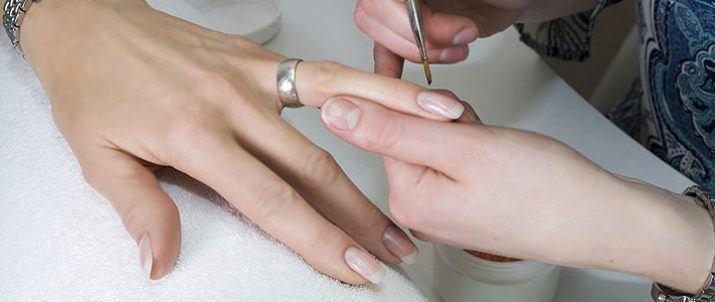
Repair tools and materials
There are several methods of "rehabilitation" of a damaged nail.The choice of the most effective method is due to the structure of the nail itself: natural, extended or gel-coated nail. Cracks can occur both on the sides and in the middle of the nail plate. The main tools and materials for repairing a broken nail are the following items:
- self-adhesive silk;
- glue for tips and natural nails;
- manicure file and buff;
- antibacterial drug - if there is no special manicure composition in the house, then simple medical alcohol or hydrogen peroxide, which is in any first-aid kit, will do;
- orange sticks for manicure.

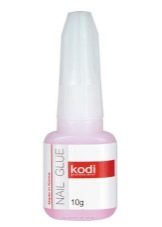

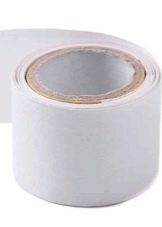
Experts recommend that women always have this manicure set with them, since the problem of a broken nail can find a lady in the most unexpected situation and significantly ruin the evening.
Despite the presence of silk, its adhesive properties are not enough for an effective result, therefore, in addition, it is necessary to use nail glue - it will allow high-quality glue of the crack.
If at the crucial moment silk was not at hand, then a tea bag, filter paper, plaster or a piece of napkin would serve as a good alternative.
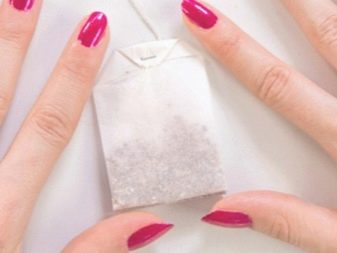

How to fix it?
Starting to restore a damaged nail plate, do not forget about precautions.
- It is forbidden to glue a natural nail with ordinary superglue. It has a rich chemical composition that can destroy living cells. Thus, the problem will only get worse. Synthetic adhesive is only suitable for extended tips.
- Try to avoid using special nail polish remover if you get a wound on your skin during the repair. Chemistry can have a negative effect on the regeneration of the skin. In this situation, it is better not to touch the damaged area; for aesthetics, it is recommended to file all other nails to the required size and take measures for the prompt healing of the abrasion.
- Don't delay rehabilitation. A small crack, which does not cause discomfort and is almost invisible, grows rather quickly. If a crack appears across the side of the nail plate, then an indifferent attitude towards it will soon lead to a breakage of a whole corner or the formation of a painful wound.
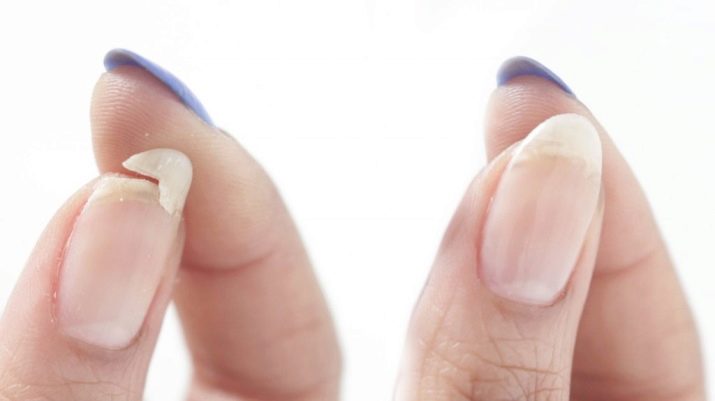
Each type requires a special approach to the restoration of the nail plate.
Natural nail
Most often, a natural nail breaks at the very base, that is, at the “smile” line. Repairing a nail can be quite simple, but this is only a temporary measure to preserve its aesthetic appearance. You can restore the lost area as follows:
- we remove the varnish from the nail plate and treat the finger with an antiseptic;
- with a buff we trim all the irregularities;
- from a piece of any fabric indicated above, cut out a fragment larger than the crack itself by 2-3 mm on each side;
- put glue on the damaged area, place the cut piece of fabric on top, press it down and level it with an orange stick (it can be replaced with a toothpick);
- the edges can be leveled again with a buff;
- if the problem is large, then 2-3 such layers will be required;
- cover the entire nail plate with varnish.
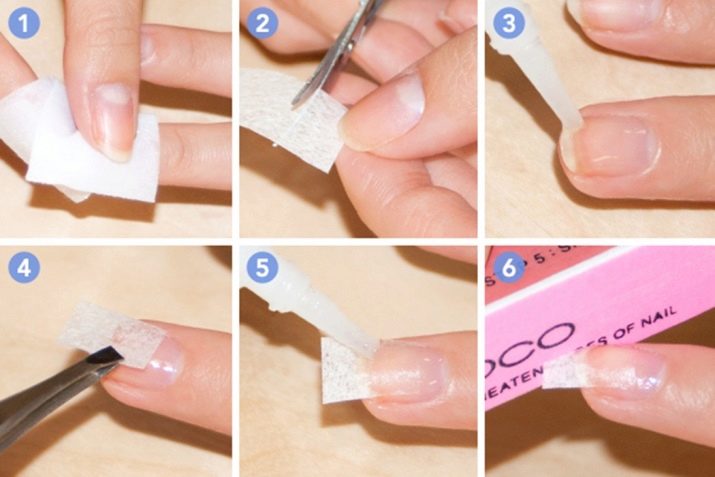
You can also glue a broken nail with a nail tip. The mechanism of work is no different, however, one acrylic element is enough here, and at the end of the work, unnecessary edges are cut off.
Crack under the gel coat
Under a gel or acrylic coating, a crack can form in the same place on both hands at once. First of all, you need to get rid of the varnish. This can be done with a specialized shellac or biogel remover. If you cannot remove the old coating, then you have to fix the flap over the old surface.
The principle of operation is the same as in the natural nail situation. A varnish is applied to the manufactured structure, which is glued to the nail, and then hands are inserted into a UV lamp.If the house has its own gel polish, then the task is greatly simplified.
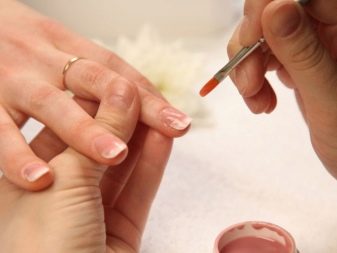
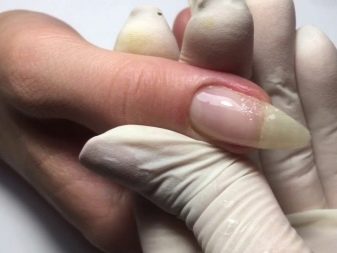
If a crack has formed along the edge of the nail, then it must be pinched off with forceps or cut off with scissors, after which it is simply to build up with biogel. Usually, the main materials for restoration are a special foil or form; it is inserted under the nail as a support for applying biogel. The final touch is drying under a UV lamp.
Increased
In this situation, acrylic tips will come to the rescue again. It can be glued to the usual superglue or "Moment", which is in every home. In this case, the nail has an artificial structure, therefore, it can be preserved using the above glue. You can attach already familiar materials to the nail as a patch: a plaster, a paper napkin, a strip of silk. To glue the damaged extended nail, use the following principles of work:
- apply a drop of glue to the damaged area and place the prepared piece of fabric on top;
- drip a little more glue on top, and when it dries, secure the result with a third drop;
- Using a file, flatten the nail and cover it with varnish on top.
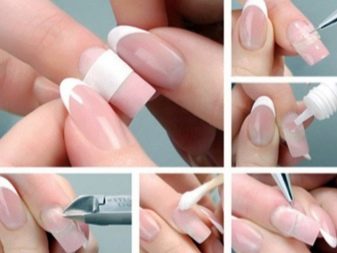
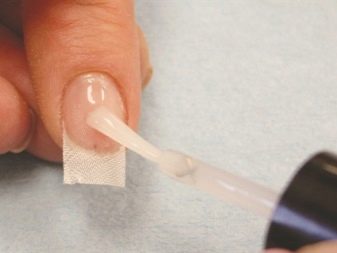
You can also repair the nail by simply replacing the damaged nail tip with a new one.
What if it's broken at the root?
Perhaps the most unpleasant situation is when the nail breaks off to the very meat. The first thing to do in this case is to treat the damaged area with an antiseptic. For this purpose, chlorhexidine, miramistin, hydrogen peroxide are suitable. Further, the most correct step would be to go to the master, who will correct the situation, however, the visit is possible only after complete healing. This is necessary so that the extension procedure does not damage the skin even more, since this stage involves the installation of a special foil under the nail plate, the edges of which can aggravate the situation. Moreover, it will be a rather painful process.
For the time of healing, the girl is recommended to simply wrap the injured finger with a plaster or bandage and change it as needed. The cuticle should be lubricated with professional products for fast nail growth. In case of contact with water, a special fingertip should be put on over the bandage - it is sold at the pharmacy.
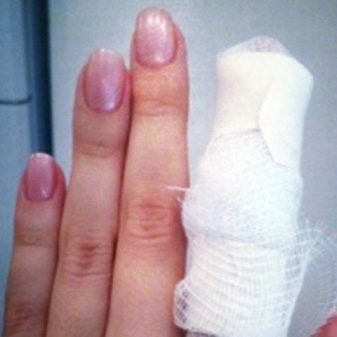
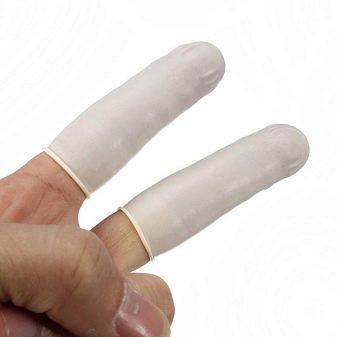
To reanimate such a nail, professionals use special protein biogels. These components restore the nail structure and form a kind of protection of the area from bacteria.
Some formulations are destroyed by the action of acetone and other chemicals, therefore, after such repairs, it is recommended to do house cleaning with gloves for some time.
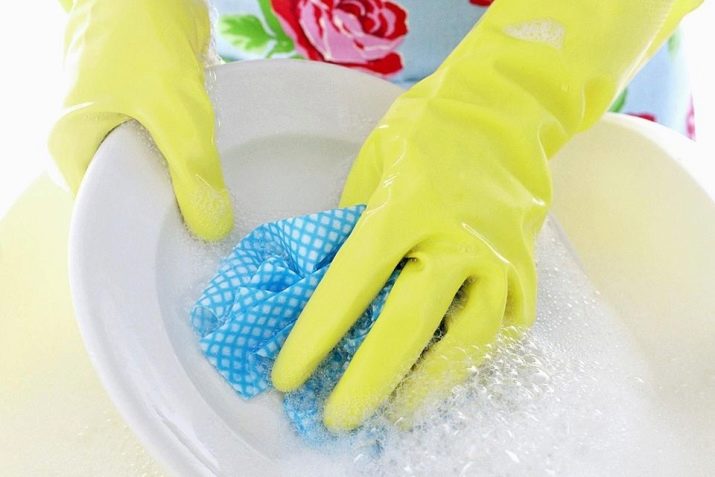
Prevention measures
To minimize the likelihood of such an unpleasant problem as nail breakage, you need to follow simple preventive measures.
- Timely contact the master and carry out the correction, do not delay visiting the nail salon. If painting is carried out at home, then the varnish also needs to be renewed in time, not to apply a new coating to the old one, but to completely remove the paint before applying a new varnish.
- Dehydration often leads to fragility of the nail plates, so it is important to drink enough fluids to prevent this problem.
- Hands should be protected from exposure to harmful chemicals and bad water, and mechanical stress should be minimized as much as possible. Gloves should be worn when washing dishes, the floor, and other types of cleaning.
- Homemade varnish should be removed with a special tool that does not contain acetone.
- You can not bite off and tear off the burrs - they should be removed with special tongs. When processing the edge of the nail, keep the file at a right angle.
- It's important to review your diet. To strengthen the nail plate, you need to eat foods that contain vitamins A, E, D, calcium and phosphorus.
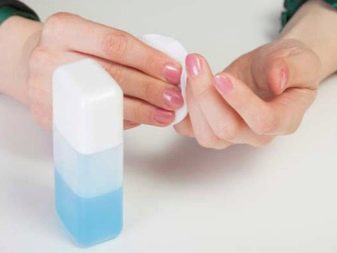

Periodically, nails that are covered with gel need to be given a rest from this remedy.
Separately, it should be said about such prevention methods as the use of folk remedies in nail care. For example, you can use sea salt for hand baths. Another effective and inexpensive drug is iodine. It must be applied to the surface of the plate, and then grease your fingers with cream. From above it is allowed to varnish the nail.
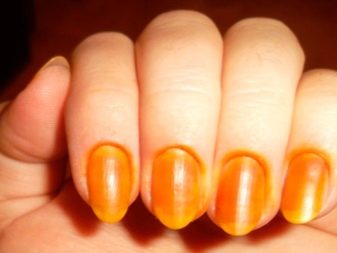
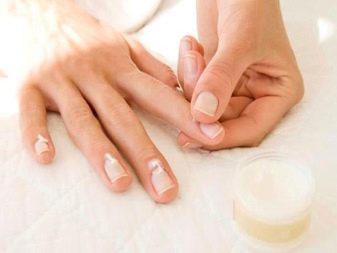
Healing wax, clay, and essential oils are also good remedies.
For information on how to save a broken nail in 2 minutes at home, see the next video.








